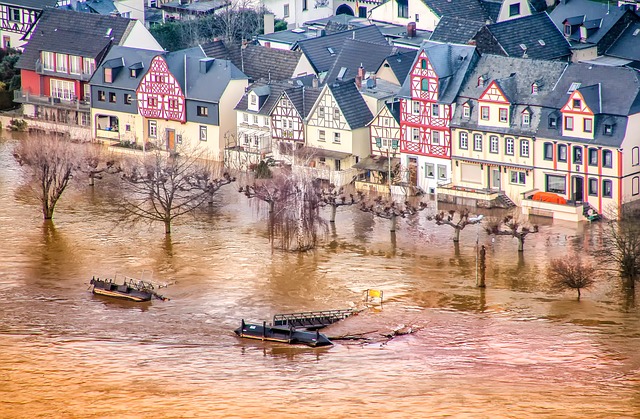The severe flooding that has affected western and southern Germany since mid-May 2018 is a ‘small foretaste’ of the effects of climate change on future weather-related disasters, according to Eberhard Faust, Munich Re’s Head of Research for climate risks and natural hazards.
 Many regions of the country have endured non-stop thunder, lightning, and heavy rain in recent weeks, with roads in some communities turned into muddy rivers as up to 150mm of rain has periodically fallen in a matter of hours.
Many regions of the country have endured non-stop thunder, lightning, and heavy rain in recent weeks, with roads in some communities turned into muddy rivers as up to 150mm of rain has periodically fallen in a matter of hours.
At the same time, northern and eastern Germany have experienced unusually warm and dry weather, with the National Meteorological Service (DWD) reporting that 2018’s April and May months were the hottest on record.
Faust explained: “Such observations clearly demonstrate the influence of man-made climate change … Studies have shown that the likelihood of heavy spring rainfall in the northern half of Europe has become significantly higher in the last two decades than it was in the decades before. And climate models are predicting that intense convective rainfall and periods of heat and drought are likely to occur more often in the future.
“Those two phenomena are related: the higher the ambient temperature, the more intense convective rainfall becomes. We can therefore consider the weather over the last few weeks to be a small foretaste of what climate change will be throwing at us a lot more frequently in the future.”
The adverse weather conditions that caused the flooding in Germany have persisted due to the northward trajectory of the jet stream, which has stabilised weather systems and prevented them from moving on, Faust said.
A high-altitude, low-pressure system has thus been continuously directing warm, humid subtropical air towards western and southern Germany, resulting in heavy localised thunderstorms that have remained static due to weak winds.
At the same time, this jet stream arc brought a high-pressure system to northern Europe, causing temperatures to reach record-breaking heights of 34°C in areas of northern and eastern Germany.
Faust noted that, because this kind of severe weather can theoretically occur anywhere, implementing any kind of considerable loss prevention measures is very challenging.
“It takes a lot of planning and expense to build flood control infrastructure or to dig huge drainage culverts under roads. And given the fact that extreme weather events are typically very rare at any given location, such expense is often unwarranted,” he said.
While municipal maps that show the probabilities of heavy rainfall can allow planners and local authorities to develop emergency plans, Faust maintained that insurance represents one of the most reliable ways to build resilience to flood risk.
“Flood insurance against conceivable losses should be a key component in any risk prevention plan, even far away from rivers, since heavy rain can happen in any region and affect everyone,” he stated. “As such events are localised and can happen anywhere, they are easily insurable. And premiums for this kind of enhanced natural hazard insurance tend not to be very high.”


